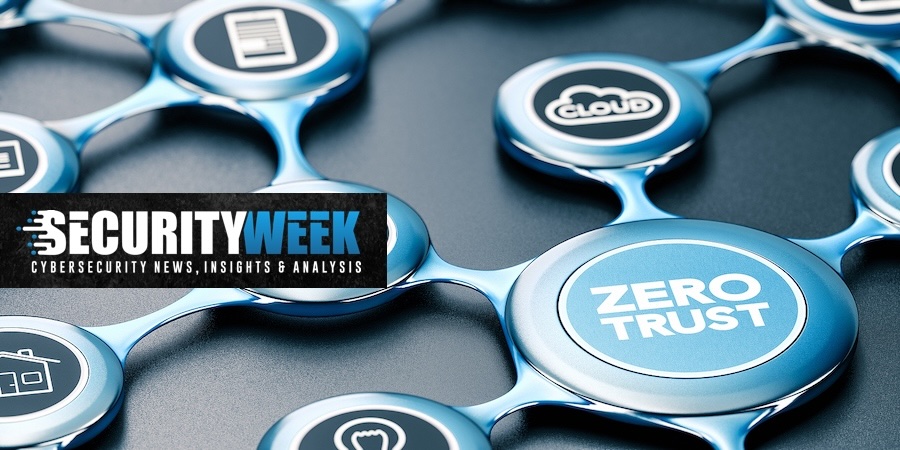Quote for the day:
“Too many of us are not living our dreams because we are living our fears.” -- Les Brown
Your employees are feeling ‘OK’ – and that’s a serious problem
 At first glance, OK doesn’t sound dangerous. Teams aren’t unhappy enough to
trigger alarms, nor are they burning out; they keep delivering at an
acceptable level. But ‘acceptable’ is not the same as ‘successful’. Teams
stuck in OK lack the energy, creativity and ambition to truly thrive. They’re
passable, not powerful – and that complacency can quietly erode performance.
... In fact, the lifetime value of a happy employee is more than twice that of
an OK one. This is not soft sentiment – it’s hard economics. By contrast, OK
teams bring hidden costs. They are about twice as likely to miss targets as
happy teams and have 50% higher staff turnover. They are also less
collaborative, less creative and less resilient when challenges arise. ...
First, reframe happiness as a serious business metric. It’s not vague or
fluffy. It’s measurable, trackable and improvable. It connects directly to
performance, retention and, ultimately, profit. Second, focus on the drivers
of happiness. I’ve identified five ways to develop happiness at work: connect,
be fair, empower, challenge and inspire. ... Third, embed a rhythm of
measure-meet-repeat. Measure: Use light-touch weekly pulses and deeper
quarterly surveys to gather data; Meet: Bring teams together to discuss
results, identify blockers and celebrate progress; and Repeat: Build
momentum with regular reflection and action. This rhythm transforms data into
dialogue, which helps organisations to improve.
At first glance, OK doesn’t sound dangerous. Teams aren’t unhappy enough to
trigger alarms, nor are they burning out; they keep delivering at an
acceptable level. But ‘acceptable’ is not the same as ‘successful’. Teams
stuck in OK lack the energy, creativity and ambition to truly thrive. They’re
passable, not powerful – and that complacency can quietly erode performance.
... In fact, the lifetime value of a happy employee is more than twice that of
an OK one. This is not soft sentiment – it’s hard economics. By contrast, OK
teams bring hidden costs. They are about twice as likely to miss targets as
happy teams and have 50% higher staff turnover. They are also less
collaborative, less creative and less resilient when challenges arise. ...
First, reframe happiness as a serious business metric. It’s not vague or
fluffy. It’s measurable, trackable and improvable. It connects directly to
performance, retention and, ultimately, profit. Second, focus on the drivers
of happiness. I’ve identified five ways to develop happiness at work: connect,
be fair, empower, challenge and inspire. ... Third, embed a rhythm of
measure-meet-repeat. Measure: Use light-touch weekly pulses and deeper
quarterly surveys to gather data; Meet: Bring teams together to discuss
results, identify blockers and celebrate progress; and Repeat: Build
momentum with regular reflection and action. This rhythm transforms data into
dialogue, which helps organisations to improve.Are cloud providers neglecting security to chase AI?
 an unsettling trend now challenges this narrative. Recent research, including
the “State of Cloud and AI Security 2025” report conducted by the Cloud
Security Alliance (CSA) in partnership with cybersecurity company Tenable,
highlights that cloud security, once considered best in class, is becoming
more fragmented and misaligned, leaving organizations vulnerable. The issue
isn’t a lack of resources or funding—it’s an alarming shift in priorities by
cloud providers. As investment and innovative energies focus more on
artificial intelligence and hybrid cloud development, security efforts appear
to be falling behind. ... The dangers of this complexity are made worse by
what the report calls the weakest link in cloud security: identity and access
management (IAM). Nearly 59% of respondents cited insecure identities and
risky permissions as their main concerns, with excessive permissions and poor
identity hygiene among the top reasons for breaches. ... Deprioritizing
security in favor of AI products is a gamble cloud providers appear willing to
take, but there are clear signs that enterprises might not follow them down
this path forever. The CSA/Tenable report highlights that 31% of surveyed
respondents believe their executive leadership fails to grasp the nuances of
cloud security, and many have uncritically relied on native tools from cloud
vendors without adding extra protections.
an unsettling trend now challenges this narrative. Recent research, including
the “State of Cloud and AI Security 2025” report conducted by the Cloud
Security Alliance (CSA) in partnership with cybersecurity company Tenable,
highlights that cloud security, once considered best in class, is becoming
more fragmented and misaligned, leaving organizations vulnerable. The issue
isn’t a lack of resources or funding—it’s an alarming shift in priorities by
cloud providers. As investment and innovative energies focus more on
artificial intelligence and hybrid cloud development, security efforts appear
to be falling behind. ... The dangers of this complexity are made worse by
what the report calls the weakest link in cloud security: identity and access
management (IAM). Nearly 59% of respondents cited insecure identities and
risky permissions as their main concerns, with excessive permissions and poor
identity hygiene among the top reasons for breaches. ... Deprioritizing
security in favor of AI products is a gamble cloud providers appear willing to
take, but there are clear signs that enterprises might not follow them down
this path forever. The CSA/Tenable report highlights that 31% of surveyed
respondents believe their executive leadership fails to grasp the nuances of
cloud security, and many have uncritically relied on native tools from cloud
vendors without adding extra protections.The Future of Global A.I.
 The accelerating development and adoption of AI products, services and
platforms present both challenges and opportunities for regions like the
Middle East and North Africa (MENA) and India that have ambitions of
integrating AI into their economies. Data presented in the report suggests
that the mobile user bases in India and MENA are primed for AI products and
services on mobile platforms. For the Middle East, AI is a crucial enabler of
economic diversification beyond its hydrocarbon industries, whereas for India,
AI can be transformative for its world-leading digital public infrastructure,
public service delivery, and digital payments platforms. ... The BOND
report notes that the current wave of AI development and adoption is
unprecedented when compared to previous technological waves. It uses OpenAI’s
ChatGPT as a benchmark to showcase the explosive growth of user adoption as
the platform achieved 1 million users within five days, 800 million weekly
active users within 17 months, and registered 90 percent of its users from
non-US geographies by its third year. ... In an era of increasing geopolitical
competition, countries are supporting efforts to achieve digital sovereignty.
The BOND report notes a growing interest in Sovereign AI projects, as
demonstrated by NVIDIA’s partnerships in countries like France, Spain,
Switzerland, Ecuador, Japan, Vietnam, and Singapore.
The accelerating development and adoption of AI products, services and
platforms present both challenges and opportunities for regions like the
Middle East and North Africa (MENA) and India that have ambitions of
integrating AI into their economies. Data presented in the report suggests
that the mobile user bases in India and MENA are primed for AI products and
services on mobile platforms. For the Middle East, AI is a crucial enabler of
economic diversification beyond its hydrocarbon industries, whereas for India,
AI can be transformative for its world-leading digital public infrastructure,
public service delivery, and digital payments platforms. ... The BOND
report notes that the current wave of AI development and adoption is
unprecedented when compared to previous technological waves. It uses OpenAI’s
ChatGPT as a benchmark to showcase the explosive growth of user adoption as
the platform achieved 1 million users within five days, 800 million weekly
active users within 17 months, and registered 90 percent of its users from
non-US geographies by its third year. ... In an era of increasing geopolitical
competition, countries are supporting efforts to achieve digital sovereignty.
The BOND report notes a growing interest in Sovereign AI projects, as
demonstrated by NVIDIA’s partnerships in countries like France, Spain,
Switzerland, Ecuador, Japan, Vietnam, and Singapore.Zero Trust Is 15 Years Old — Why Full Adoption Is Worth the Struggle
 Effective ZT will not eliminate all breaches – there are simply too many ways
into a network – but it would certainly limit the effectiveness of stolen
credentials and inhibit lateral movement by intruders, and malicious activity
by insiders inside the enterprise network. “Here’s the part most people miss:
Zero Trust is just as important for reducing insider risk as it is for keeping
out external threats.,” comments Chad Cragle. “Zero Trust is just as important
for reducing insider risk as it is for keeping out external threats.” ...
Putting people first is good people management and good PR, but bad security.
It gives too much leeway to three basic human characteristics: a propensity to
trust on sight, a tendency to be lazy, and a deep rooted curiosity. We have a
natural tendency to trust first and ask questions later; to skirt security
controls when they are too intrusive and hinder our work, and we are naturally
curious. ... Technology first is becoming more essential in the emerging world
of AI-enhanced deepfakes. We can no longer rely on people being able to
recognize people. We are easily fooled into believing this entity is the
entity we know and trust. ... Getting the technology ready for ZT is also
hard, partly because many applications were not built with ZT in mind. “Many
older programs just don’t play nice with modern security,” comments J Stephen
Kowski, “so businesses end up stuck between keeping things secure and not
slowing down the way they work.”
Effective ZT will not eliminate all breaches – there are simply too many ways
into a network – but it would certainly limit the effectiveness of stolen
credentials and inhibit lateral movement by intruders, and malicious activity
by insiders inside the enterprise network. “Here’s the part most people miss:
Zero Trust is just as important for reducing insider risk as it is for keeping
out external threats.,” comments Chad Cragle. “Zero Trust is just as important
for reducing insider risk as it is for keeping out external threats.” ...
Putting people first is good people management and good PR, but bad security.
It gives too much leeway to three basic human characteristics: a propensity to
trust on sight, a tendency to be lazy, and a deep rooted curiosity. We have a
natural tendency to trust first and ask questions later; to skirt security
controls when they are too intrusive and hinder our work, and we are naturally
curious. ... Technology first is becoming more essential in the emerging world
of AI-enhanced deepfakes. We can no longer rely on people being able to
recognize people. We are easily fooled into believing this entity is the
entity we know and trust. ... Getting the technology ready for ZT is also
hard, partly because many applications were not built with ZT in mind. “Many
older programs just don’t play nice with modern security,” comments J Stephen
Kowski, “so businesses end up stuck between keeping things secure and not
slowing down the way they work.”Crafting an Effective AI Strategy for Your Organization: A Comprehensive Approach
 Without a deliberate strategy, AI initiatives might remain small pilot
projects that never scale, or they might stray from business needs. A
well-crafted AI strategy acts as a compass to guide AI investments and
projects. It helps answer critical questions upfront: Which problems are we
trying to solve with AI? How do these tie to our business KPIs? Do we have the
right data and infrastructure? By addressing these, the strategy ensures AI
adoption is purposeful rather than purely experimental. Crucially, the
strategy also weaves in ethical and regulatory considerations ... An AI CoE is
a dedicated team or organizational unit that centralizes AI expertise and
resources to support the entire company’s AI initiatives. Think of it as an
in-house “AI SWAT team” that bridges the gap between high-level strategy and
the technical execution of AI projects. ... As organizations deploy AI more
widely, ethical, legal, and societal responsibilities become non-negotiable.
Responsible AI is all about ensuring that systems are fair, transparent, safe,
and aligned with human values. ... Many AI models, especially deep learning
systems, are often criticized for being “black boxes”—making decisions that
are difficult to interpret. Explainable AI (XAI) is about creating methods and
tools to make these models transparent and their outputs understandable.
Without a deliberate strategy, AI initiatives might remain small pilot
projects that never scale, or they might stray from business needs. A
well-crafted AI strategy acts as a compass to guide AI investments and
projects. It helps answer critical questions upfront: Which problems are we
trying to solve with AI? How do these tie to our business KPIs? Do we have the
right data and infrastructure? By addressing these, the strategy ensures AI
adoption is purposeful rather than purely experimental. Crucially, the
strategy also weaves in ethical and regulatory considerations ... An AI CoE is
a dedicated team or organizational unit that centralizes AI expertise and
resources to support the entire company’s AI initiatives. Think of it as an
in-house “AI SWAT team” that bridges the gap between high-level strategy and
the technical execution of AI projects. ... As organizations deploy AI more
widely, ethical, legal, and societal responsibilities become non-negotiable.
Responsible AI is all about ensuring that systems are fair, transparent, safe,
and aligned with human values. ... Many AI models, especially deep learning
systems, are often criticized for being “black boxes”—making decisions that
are difficult to interpret. Explainable AI (XAI) is about creating methods and
tools to make these models transparent and their outputs understandable.Building security that protects customers, not just auditors
Good engineering usually leads to strong security, and cautions against just going through the motions to meet compliance requirements. ... Sadly, threat actors don’t need to improve, most of the market is very far behind and old-school attacks like phishing still work easily. One trend we’re seeing in the last few years is a strong focus on crypto attacks, and on crypto exchanges. Even these usually involve classic techniques. Another are “SMS abuse” attacks, where attackers exploit endpoints that trigger sending sms messages, which they send to premium numbers they want to bump up. Many such attacks are only discovered when the bill from the SMS provider arrives. ... Current Security Information and Event Management (SIEM) vendors often offer stacks and pricing models that just don’t fit the sheer scale and speed of transactions. Sure, you can make them work, if you spend millions! ... If you just check boxes, you are not protecting your customers, you are just protecting your company from the auditor. Try to understand the rationale behind the control and implement it according to your company’s architecture. Think of it philosophically, would you be happy being a box-ticker or would you prefer to have impact? ... Your goal is to find a way to collaborate with your QSA, they can be true partners for driving positive change in the company.Enterprise-Grade Data Ethics: How to Implement Privacy, Policy, and Architecture
 Embedding ethics and privacy into daily business operations involves practical,
continuous steps integrated deeply into organizational processes. Core
recommendations include developing clear and understandable data policies and
making them accessible to all stakeholders, regularly training teams to maintain
updated awareness of ethical data standards, building privacy considerations
directly into system architecture from inception, and collaborating with legal
and technical teams on application programming interfaces (APIs) and data models
to incorporate explicit privacy rules. ... An enterprise architecture framework
creates fundamental support by outlining precise methods for data storage,
transfer, and access permissions. Organizations use new and emerging
technologies alongside other comprehensive tools to establish systematic
policies while implementing strong encryption and data masking approaches for
secure data management. ... Executive leaders who dedicate themselves to
ethical data handling create profound changes in corporate cultural values.
Organizations can demonstrate their strategic dedication to data ethics through
executive-level visibility of privacy and ethics system design oversight,
combined with employee training investments and performance accountability
systems.
Embedding ethics and privacy into daily business operations involves practical,
continuous steps integrated deeply into organizational processes. Core
recommendations include developing clear and understandable data policies and
making them accessible to all stakeholders, regularly training teams to maintain
updated awareness of ethical data standards, building privacy considerations
directly into system architecture from inception, and collaborating with legal
and technical teams on application programming interfaces (APIs) and data models
to incorporate explicit privacy rules. ... An enterprise architecture framework
creates fundamental support by outlining precise methods for data storage,
transfer, and access permissions. Organizations use new and emerging
technologies alongside other comprehensive tools to establish systematic
policies while implementing strong encryption and data masking approaches for
secure data management. ... Executive leaders who dedicate themselves to
ethical data handling create profound changes in corporate cultural values.
Organizations can demonstrate their strategic dedication to data ethics through
executive-level visibility of privacy and ethics system design oversight,
combined with employee training investments and performance accountability
systems.
CIOs are stressed — and more or less loving it
 Not surprisingly AI has upped the ante for stress — or in Richard’s case,
concern over the quick adoption of AI tools by end users who may or may not know
what to do with them. “I would say that’s probably the thing I worry about the
most. I don’t know that it stresses me out,” but he constantly thinks about what
tools employees are using and how they are using them. “We don’t want to suck
away all the productivity gains by limiting access to great tools, but at the
same time, we don’t want to let people run wild with [personally identifiable
information] or data” by tools not managed by IT. ... Even with all the
pressures on CIOs today and the need to wear many hats, most say the job is
still worth it. Pressure, it seems, is not always a bad thing. “I’m still in it,
so it must be worth it,’’ Grinnell says. “CIOs have a certain personality; we
know you’re not getting into the job and it’ll be smooth sailing. We have to
solve a challenge — whatever the challenge is.” … It’s tiring, it’s
stressful, but I get up energized every day to go tackle that. That’s who I am.”
Driscoll says she likes pressure and finds her role “worth it more now than ever
because the job of CIO and CTO has evolved to where the expectation is you will
be responsible for the technology, but also be a core partner in where the
business is going. For me, that ability to help drive business outcomes, and
shape wherever we go as a company makes my job more exciting and worth it.”
Not surprisingly AI has upped the ante for stress — or in Richard’s case,
concern over the quick adoption of AI tools by end users who may or may not know
what to do with them. “I would say that’s probably the thing I worry about the
most. I don’t know that it stresses me out,” but he constantly thinks about what
tools employees are using and how they are using them. “We don’t want to suck
away all the productivity gains by limiting access to great tools, but at the
same time, we don’t want to let people run wild with [personally identifiable
information] or data” by tools not managed by IT. ... Even with all the
pressures on CIOs today and the need to wear many hats, most say the job is
still worth it. Pressure, it seems, is not always a bad thing. “I’m still in it,
so it must be worth it,’’ Grinnell says. “CIOs have a certain personality; we
know you’re not getting into the job and it’ll be smooth sailing. We have to
solve a challenge — whatever the challenge is.” … It’s tiring, it’s
stressful, but I get up energized every day to go tackle that. That’s who I am.”
Driscoll says she likes pressure and finds her role “worth it more now than ever
because the job of CIO and CTO has evolved to where the expectation is you will
be responsible for the technology, but also be a core partner in where the
business is going. For me, that ability to help drive business outcomes, and
shape wherever we go as a company makes my job more exciting and worth it.”
No comments:
Post a Comment